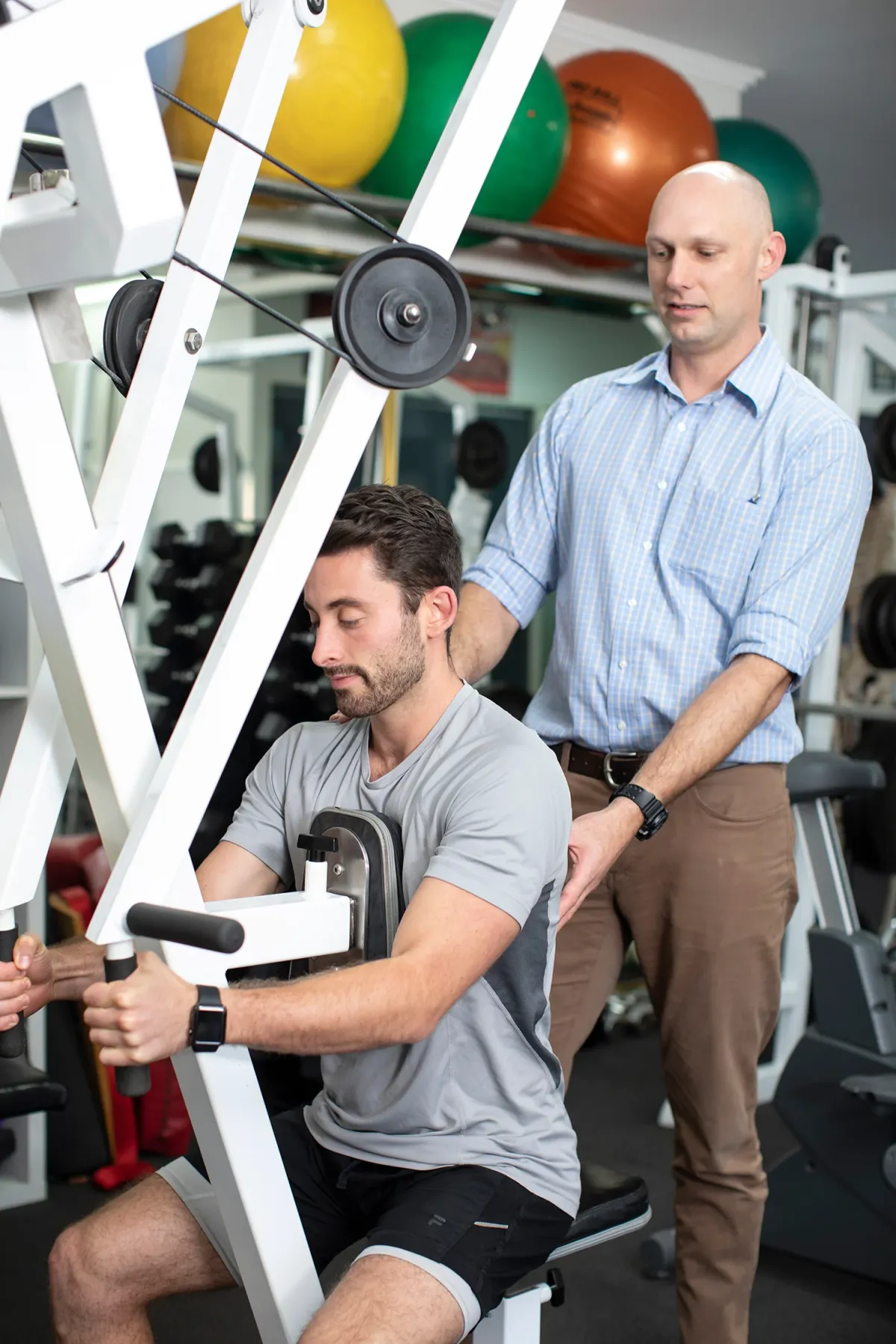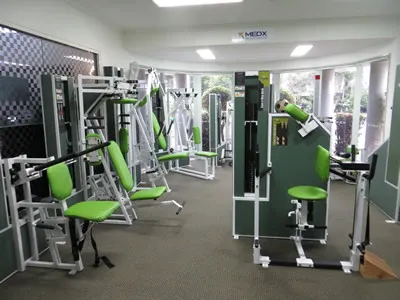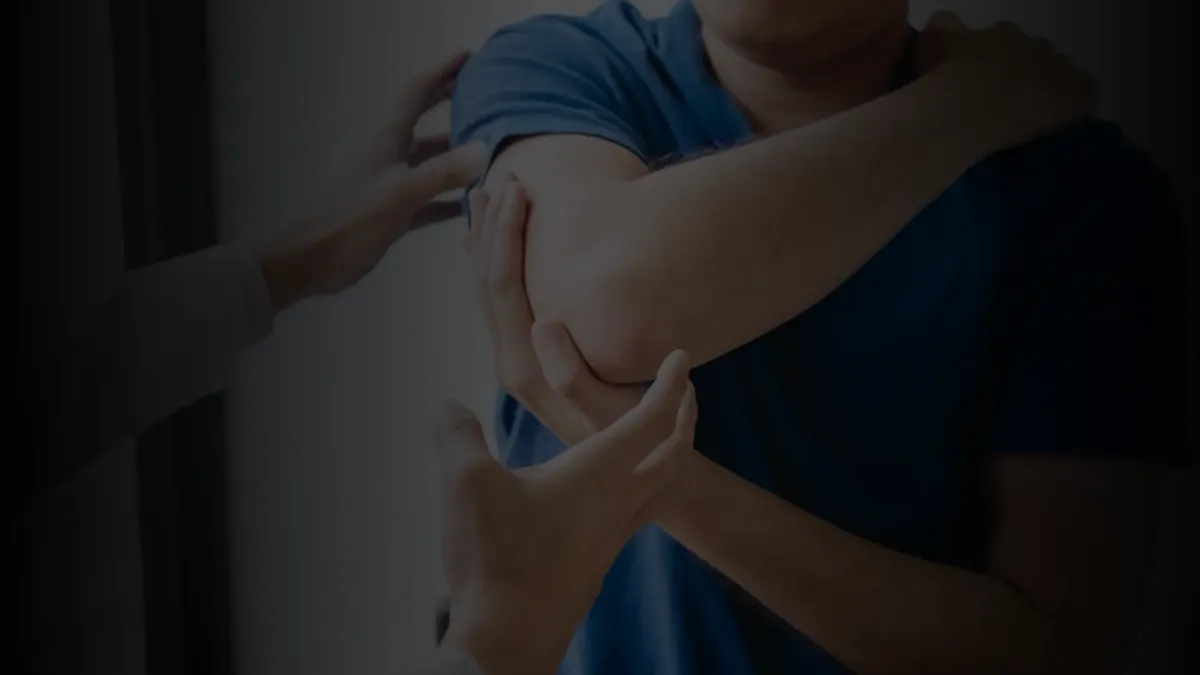
Reach Your Athletic Potential with Precision Care
WHY MEDX?
My Perspective on the MedX Core Stabilisation System
By Richard Newton (Founder of Pindara Physiotherapy Clinic)
As a Physiotherapist with a special interest in back pain (especially chronic or long term back pain) and with a desire to achieve good, long term results for my clients in a short period of time, the MedX Core Spinal System is interesting for a number of reasons.
For me to be comfortable with any approach, it has to tick a number of boxes.
Is it evidence based?
These days the medical profession demands evidence-based practice, i.e. well conducted research showing true benefits to our patients. There are thousands of supposed "cures" for back pain, but at the top of the tree in the evidence-based approaches is "supervised exercise programmes".
The Australian Physiotherapy Associations "Position Statement" on management of chronic low back pain states, "Supervised exercise programs are strongly recommended in the treatment of low back pain." The MedX system is exactly this. a supervised exercise programme, and as such, fits in perfectly with these evidence-based guidelines.
There are many studies published in respected peer review journals such as "Spine" showing the benefits of exercising on the MedX Spinal Stability System, so you can be assured that the MedX Core Spinal System will deliver what we say it will.
How does it "feel"?
I like to feel things for myself. If I am going to recommend something for my patients, I have to have a good "feel" for what it is like and be able to match this "feel" to different demands of different clients. The demands of an 80-year-old patient with an arthritic spine are quite different to that of a 25-year-old athlete with chronic back pain. Because of the design of the MedX machines, we are able to exercise both the high end and the low end of the scale with equal effectiveness.
I have looked at a range of back strengthening systems and exercises over many years. One of the major determinants of successful rehab is good lower back strength. Here is my take on all of those:
Swiss or Exercise Ball - Now don't get me wrong, I love the ball and still teach a class of this every week and for some "extra" work at home for those who are keen it is great, but. My older clients can't get on and off the floor easily and even the five basic positions are too much for many of my weaker clients - no such problems with MedX - easy access to all the machines and because of our low starting weight and lower coefficient of friction, it is very easy to do.
For the athletes and active workers, MedX works the all important posterior chain like no other. 15-20 minutes on the ball still doesn't target the lumbar extensors as well as the MedX lumbar extension machine. The extensors simply work harder on the MedX and part of this is because of the restraint system taking the legs out of the picture.
You can certainly try this for yourself. Please come and do a whole Swiss ball class and then try the MedX lumbar extension machine. There is no comparison and feel, with a much higher level of targeting with the MedX.
The next aspect is rotational movement. In cases of lumbar instability, the current thinking is that it is the rotational component that is the "unstable" component. We need this to be controlled by a good rotator muscle function. Rotational movements on the ball just don't load the rotators to anywhere near the same level. It is just too low key and quite difficult from a balance perspective.
Most people injure their backs flexing (bending forward) with a small rotational component. The classic statement is "I just bent down to ... and felt it go!" We have also tried to set up rotational strengthening work with rubber tubing attached to poles etc, but still it is nothing like the MedX core rotation.
What about Pilates?
Isn't that about "core strength"? Well yes and like the ball it is and does work well in some cases. But again, getting isolated loads to strengthen the core is difficult as all the exercises involve arms and legs to a degree, so we question if the "core strength" is happening or just increased arm and leg strength.
What about more traditional gym work?
There are a number of design differences with the MedX Medical Exercise Machines versus conventional gym machines.
Low start weight: MedX Machines have a very low start weight, so we are able to start people with spinal problems earlier in rehabilitation without aggravation. Weight can be increased 2 pounds at a time, simply by inserting a pin.
Safer Movement: Every element of the machine's drive train is designed to achieve vertical weight stack movement of only one foot on a full-range repetition; about half of what other equipment produces, reducing inertia and enhancing safety.
Low-Friction: Eliminating friction-inducing weight stack guide rods, and using high quality ball bearings throughout the machine produces a very low coefficient of friction. This produces a movement that is exceptionally smooth, which is very important for rehabilitation. MedX is simply unmatched in this regard by any other gym equipment I've tested and tried.
Patented Compound Weight Stack: Base plates of 20 pounds each combine with the upper stack of nine 2-pound plates to accommodate both gradual increases and depending on the exercise up to 1,200 pounds of total resistance. What this simply means is that using MedX Medical Exercise Machines we can exercise a 90 year old with arthritis problems who we need to be careful with just as easily as a 25 year old. elite athlete who wants more of a challenge to meet the demands of his work or sport.
Patented Restraint Mechanisms: Most conventional strength work for the all-important posterior chain has a large contribution from the glutes (buttock muscles) and hamstrings. Quite often the result is the glutes and hamstrings get stronger, but the back remains weak. The restraint mechanisms lock out and take out assistance from the legs and hips, so the core muscles are isolated which increases stability and allows specific, intensive and effective strengthening.
As Physiotherapists we have a simple test for measuring back endurance called the Beiring Sorenson Test which tests the endurance capability of this posterior chain and it is interesting that most patients comment that it is often their legs that give out before their back in this endurance test.
Biomechanics: The other thing to consider is biomechanics. In traditional gym work you are lifting the same weight through the entire range and as such, it follows that you can only lift what the weakest part of the range can tolerate.
The designs of the MedX machines are quite unique. They work on a "cam". This "cam" means the weight varies throughout the entire range. It is lighter in the weakest part of the range and heavier in the strongest part of the range. These are called resistance curves and are matched to tested and proven strength profiles.



Have a question?
Speak to one of our staff
Return to the sport you love
Pindara Physiotherapy and Sports Medicine is the leading provider of Physiotherapy and Allied Health Services on the Gold Coast.



